The city of Bath is not one of England’s largest cities, but certainly one of the best known for visitors. The whole city center is like going back to the Georgian time in the 18th century, where architects and builders transformed Bath from a relatively ordinary provincial town into a famous resort.
Bath is home to the only natural hot spring on the British Isles, and they were already appreciated and used in Roman times. Over time, much of the city’s life has been centrered around the spring, and it still is. Today, it is both possible to see the preserved parts of the Roman baths and to take a dip in the warm water in modern spa facilities.
The Georgian architects created Bath with elegance and included elements in the city plan such as Queen Square, The Circus and Royal Crescent. They are fine streets and squares in the city, which also houses Bath Abbey and Pulteney Bridge as attractive architectural features.
Bath is located in a valley made by the winding of the Avon River, and in the area around the city there are many things to see and do in the nature and of cultural-historical value. Stonehenge is located in the surrounding area and you can easily visit interesting cities such as the large city of Bristol and the diocese of Wells.
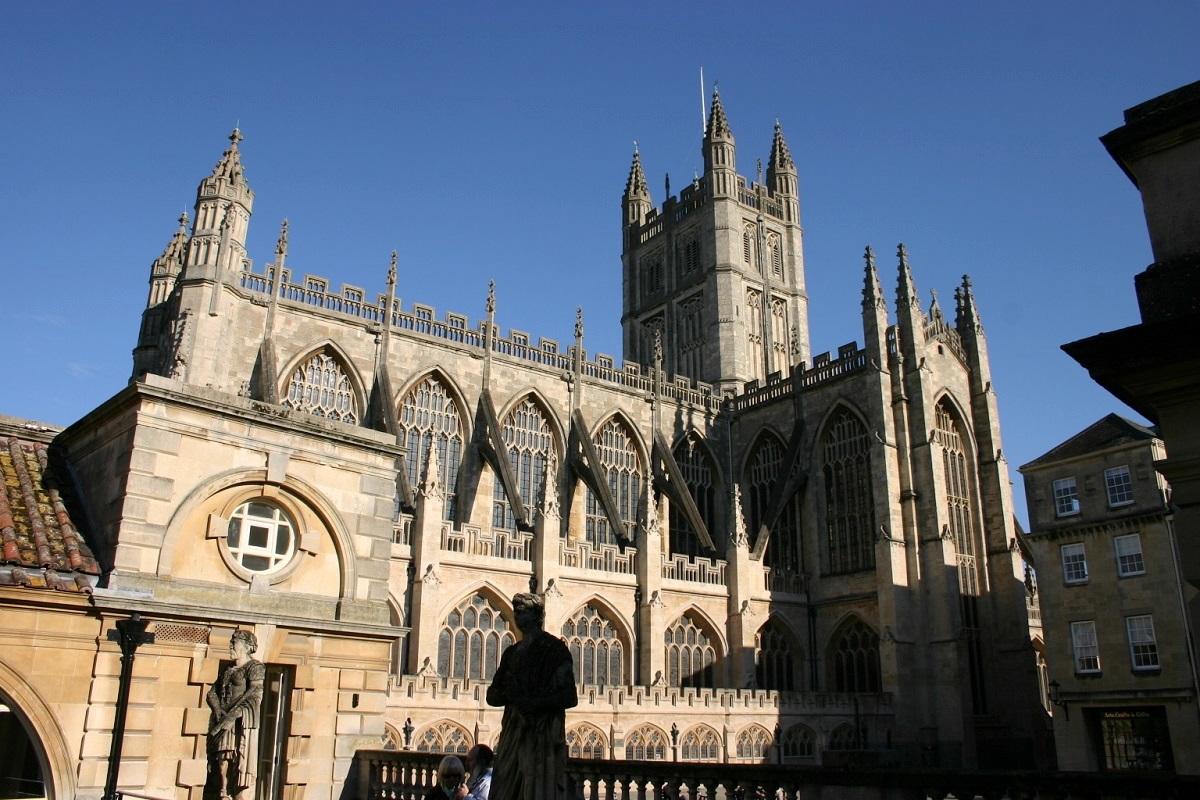
The beautiful Bath Abbey is one of England’s famous church buildings. It was founded in the 6th century, but the current Gothic building is newer and was built over several centuries. The church is the center of the city and you should see the beautiful interior of the building.
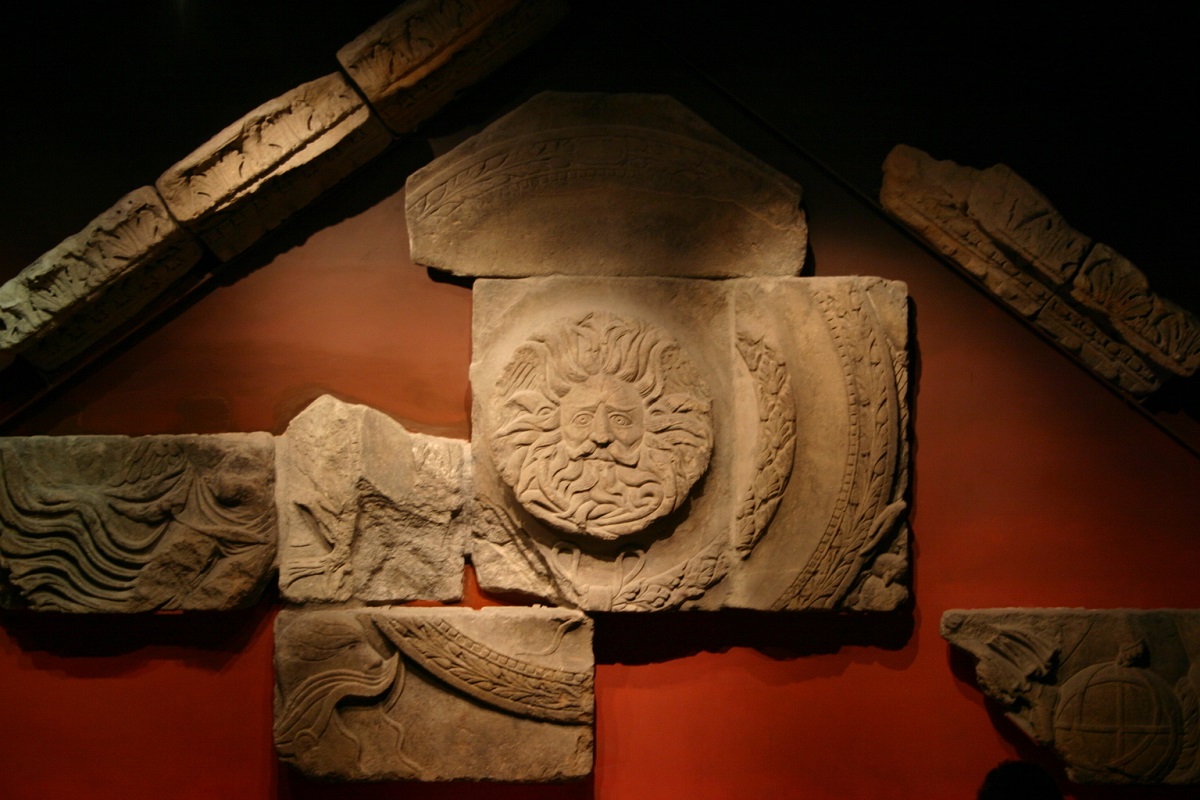
The large and impressive Roman baths are the most famous attraction in Bath. The baths were built in the years 60-70 at the only hot spring in the British Isles. The large facility has today been excavated, and you can walk around and see well-preserved parts of the old baths.
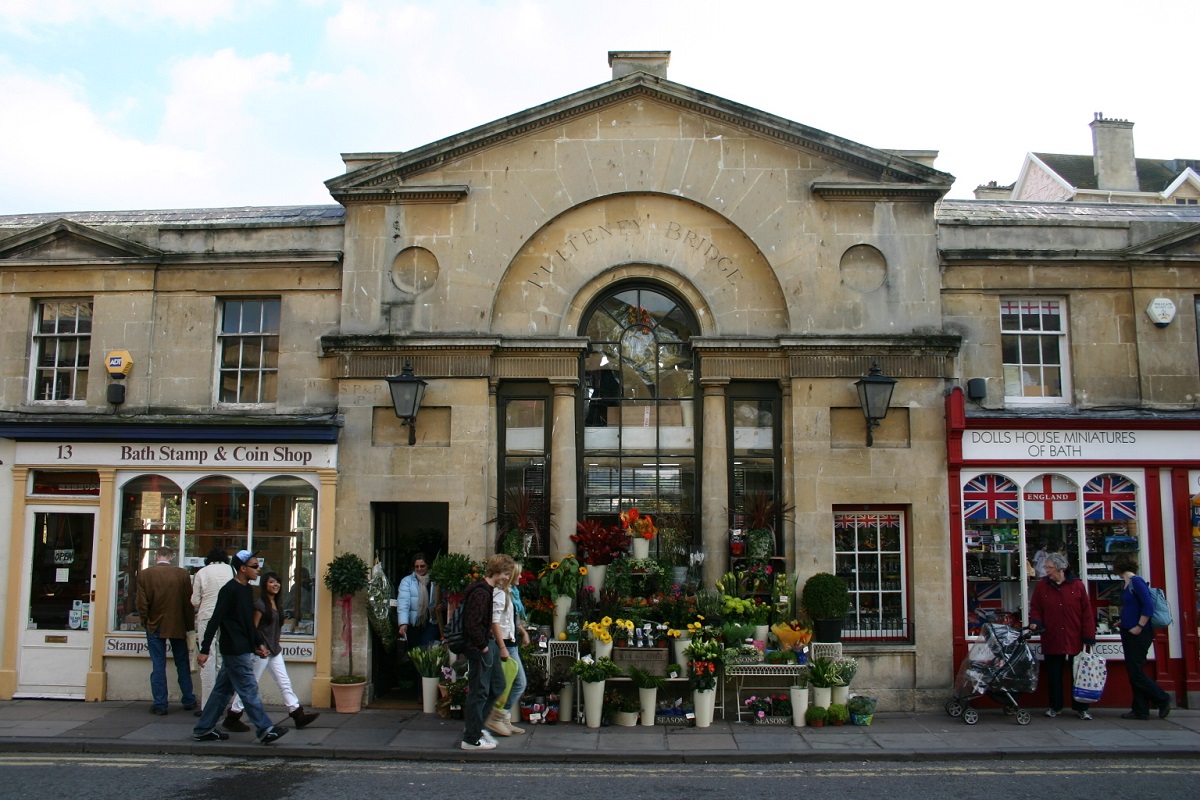
The Pulteney Bridge spans the Avon River and is one of the only in the world where shop arcades have been built on the bridge itself and along its entire length. The bridge was completed in 1773 and is named after Frances Pulteney.
Thermae Bath Spa is a spa center where you can enjoy Bath’s hot springs, the only one of its kind in the British Isles. The modern center opened in 2006, and in addition to the bath itself, a wide range of different wellness services are offered.
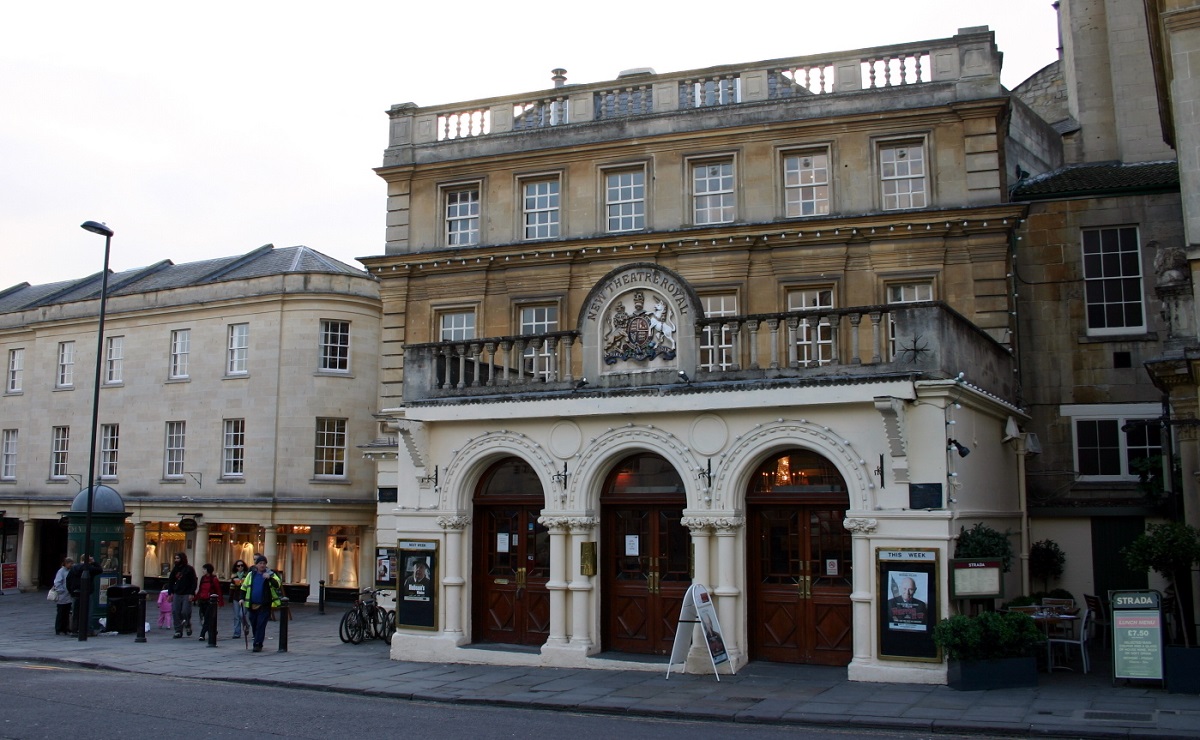
Baths Theater Royal was founded in 1805 and has since been one of the leading English theaters in the country outside London. The current entrance building to the theater was built in 1720.
Queen Square is one of the squares in Bath where one can see Georgian houses and town planning by the architect John Wood the Elder who lived in a house here himself.
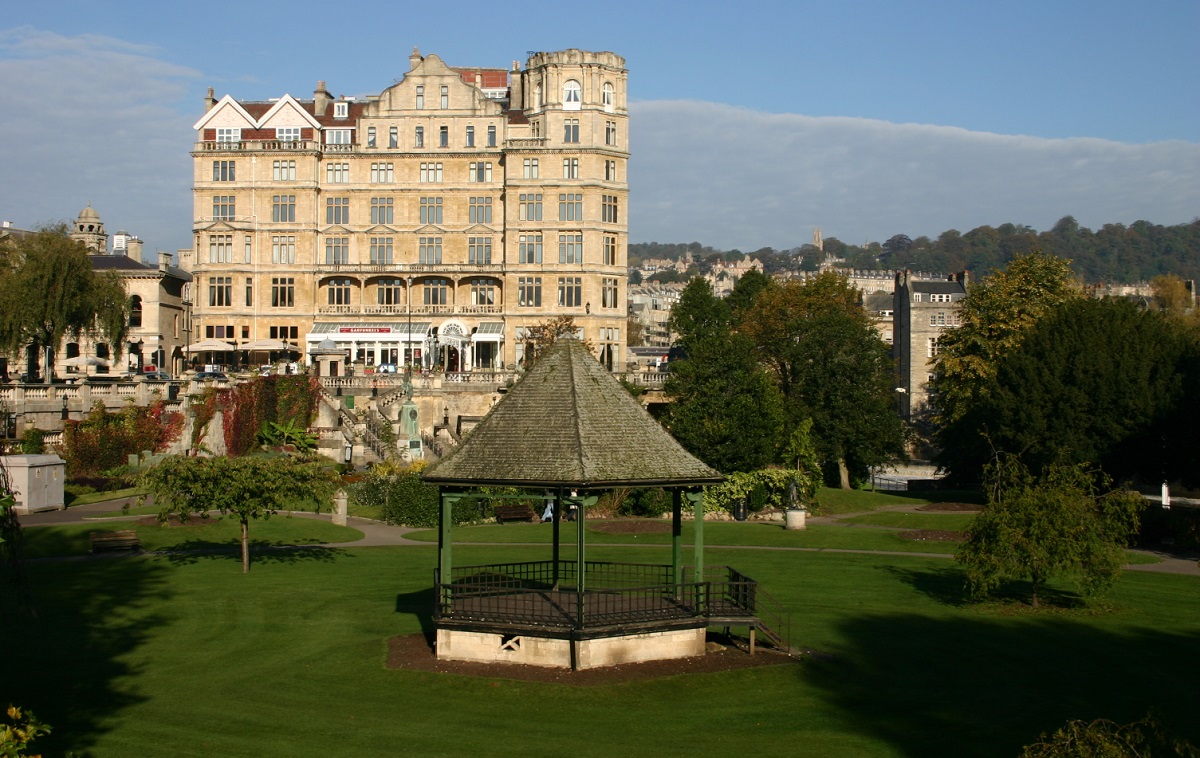
Parade Gardens, also called Bath City Park, is a lovely green oasis along the River Avon in the center of Bath. From here you can enjoy excellent views of Pulteney Bridge and Bath Abbey, among others.
Victoria Art Gallery is an art museum where you can see works by British oil painters from the 17th century to the present day. Here are works by Gainsborough, Sickert and many others.
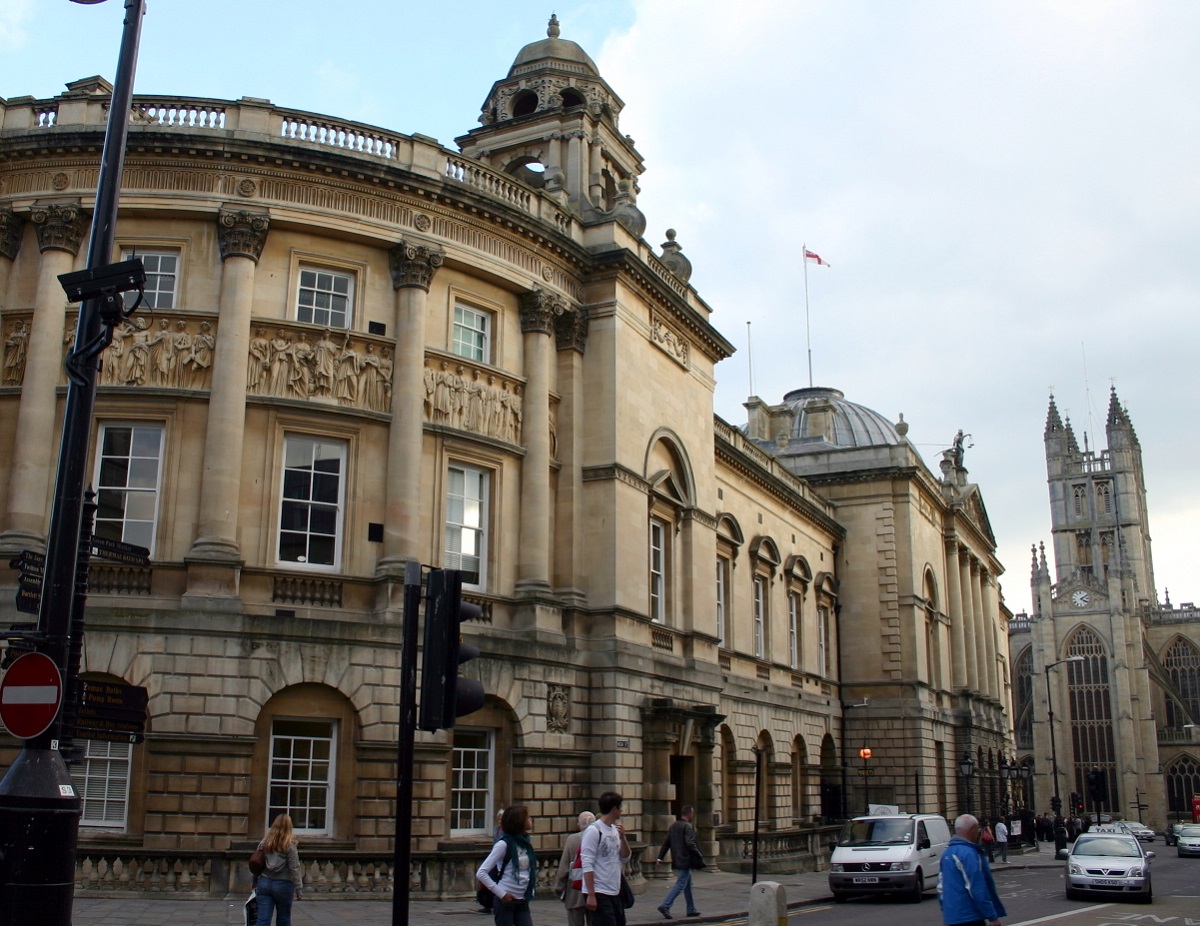
The Guildhall is one of Bath’s beautiful, monumental buildings in the city center. It is a representation hall that is today used for celebrating various parties and events.
At this museum you can experience the exciting history behind the transformation of the city of Bath from having been an ordinary provincial city to being an architectural gem and a world-famous spa.
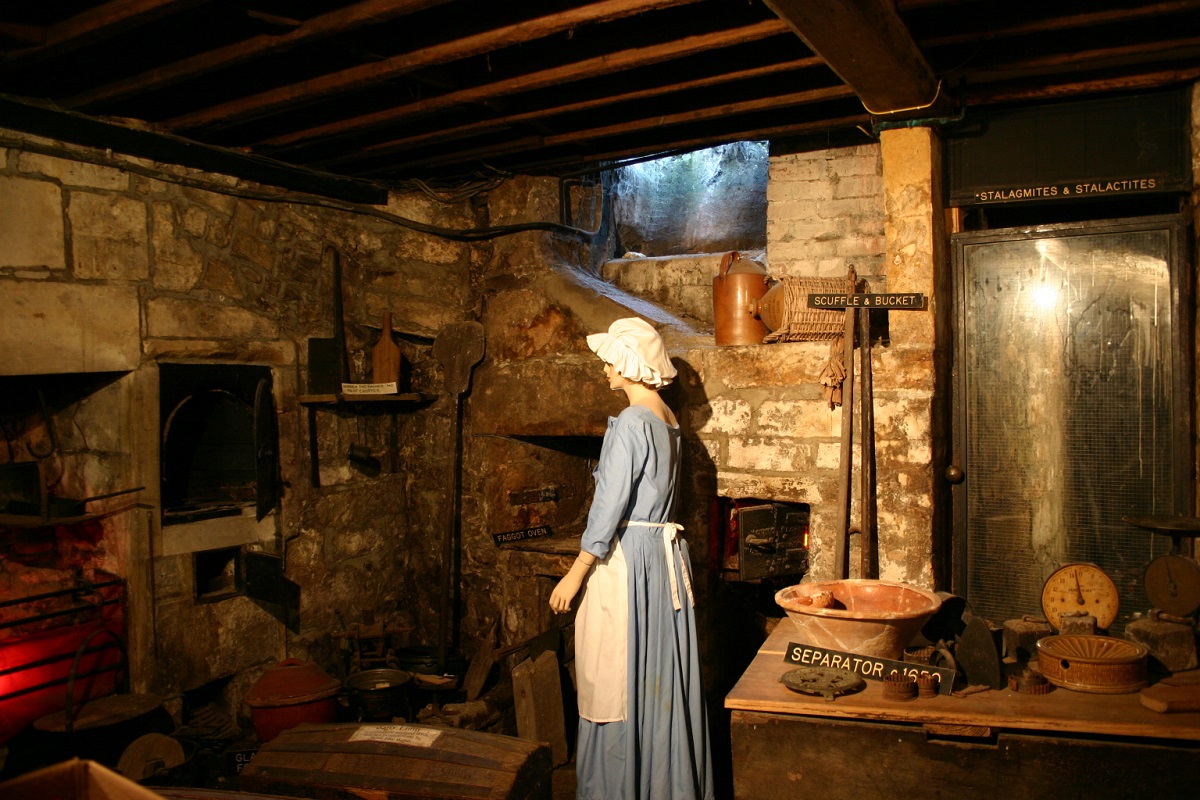
This is one of the city’s more special but very worth visiting attractions, where you can taste the restaurant’s famous buns in several ways. It is a restaurant based on the French woman Sally Lunn who came to England more than 300 years ago.
At the end of the beautifully developed Great Pulteney Street you can visit the Holburne Museum of Art. It is located in the 18th-century Sydney Hotel.
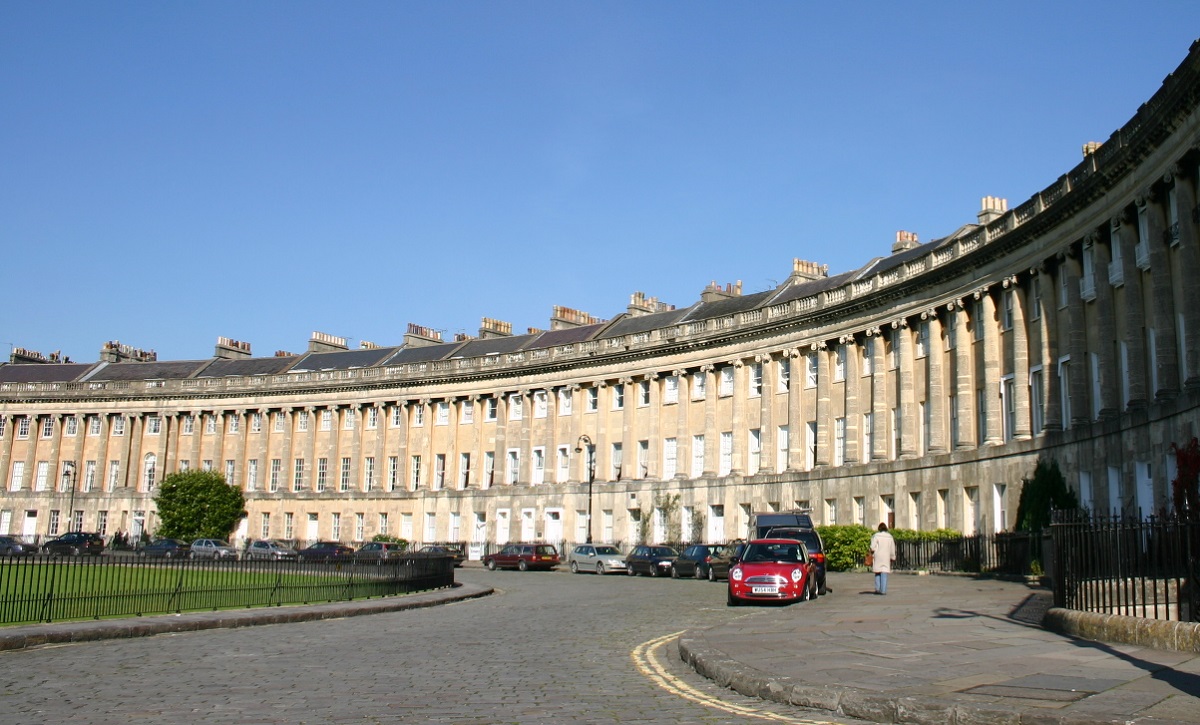
Royal Crescent is a building consisting of 30 identical houses built in a circular section, as seen in several places in England. The houses were constructed in the years 1767-1774, and they are considered one of the most distinguished Georgian buildings in the country.
The Circus Square is like a circle with stately Georgian buildings around it. You can see the three rows of houses that were built in the period 1754-1768, and they form a gem in Bath’s urban planning.
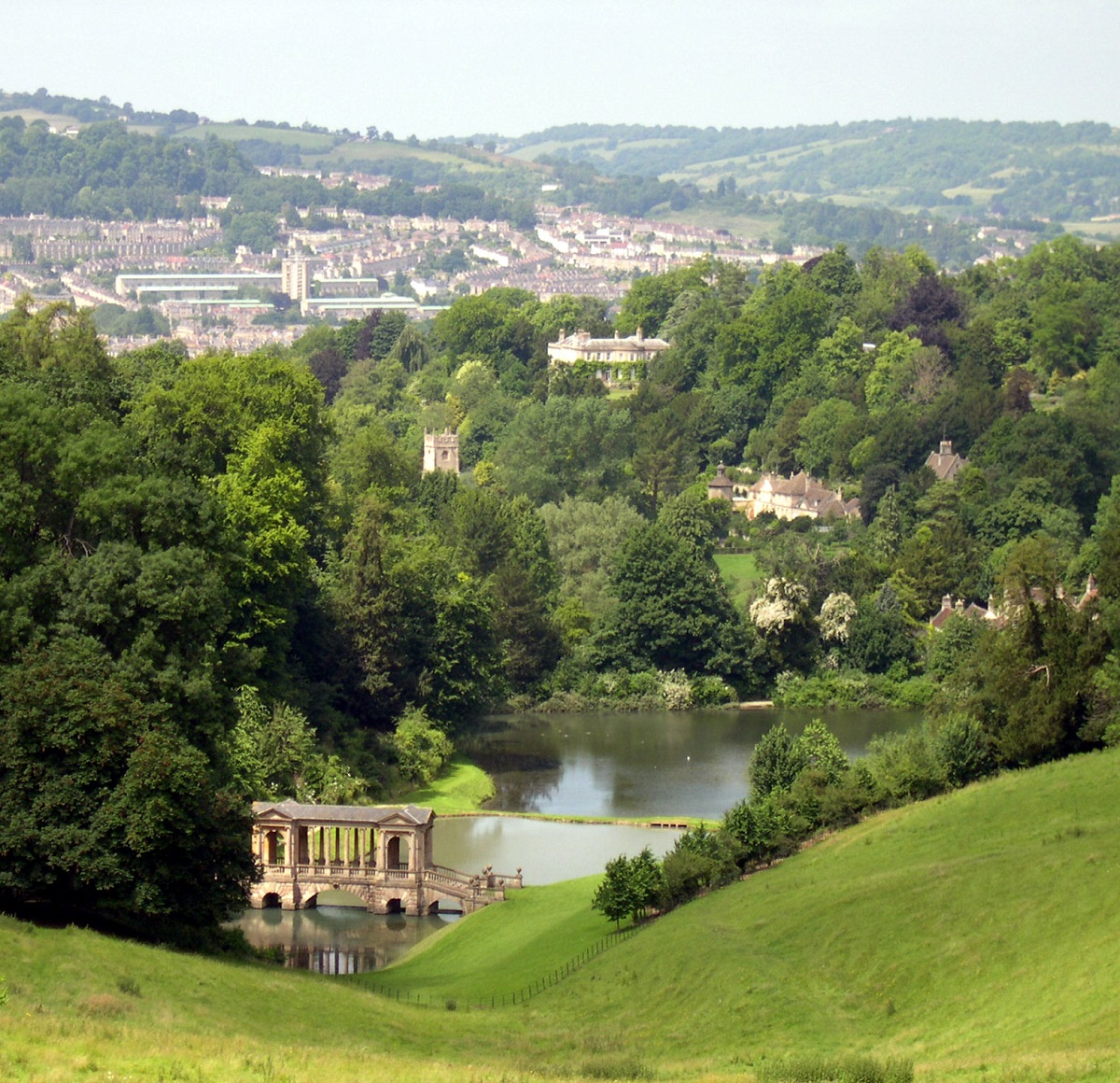
Prior Park is an English landscape garden where you can take beautiful walks on paths, across lawns or in forests. From several places there is a nice view to Bath and the hilly terrain around the city.
Beckford’s Tower is a tower that was designed in 1825 and completed for William Beckford two years later. The function of the high tower was partly as a study chamber and partly for the storage of William Beckford’s art collection.
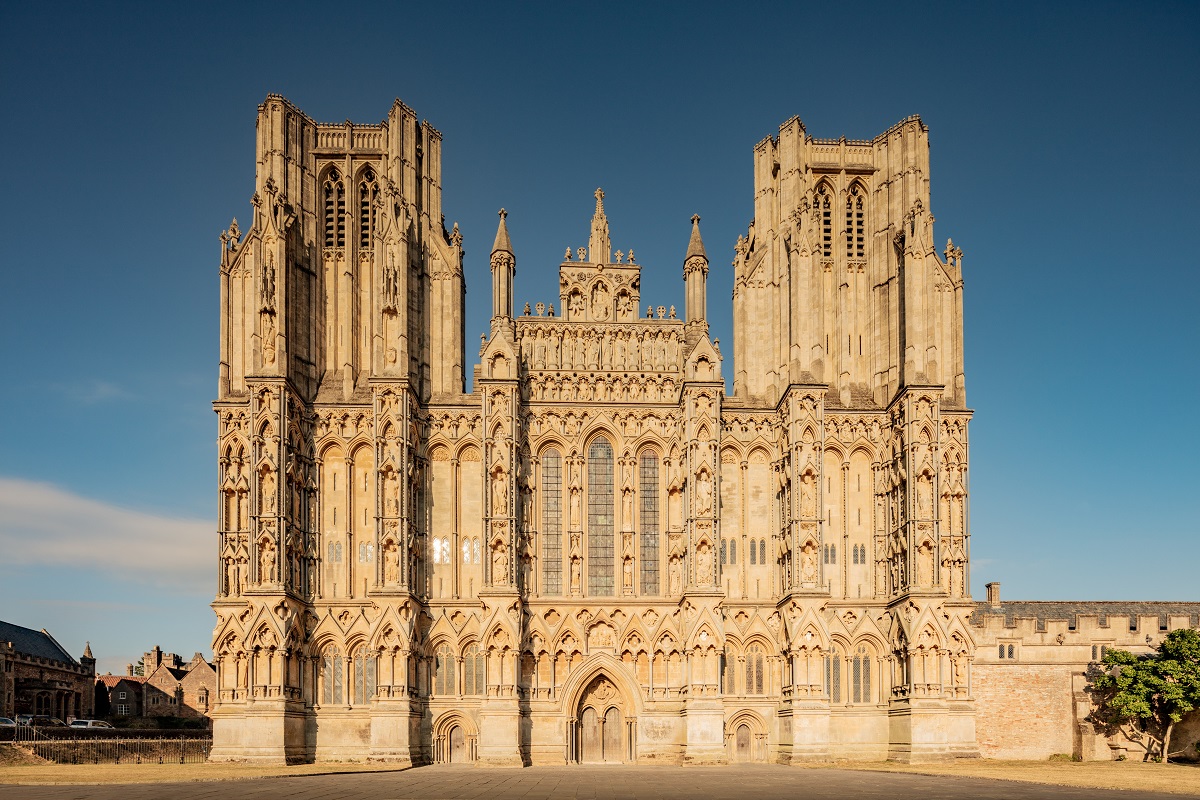
The town of Wells is by English standards quite small with about 10,000 inhabitants, but it attracts many tourists with a status as an old episcopal see, where the very beautiful and interesting Wells Cathedral is located.
Bristol has been one of England’s economically and culturally leading cities for the past many centuries, and it has brought prosperity and the opportunity to build a number of interesting buildings that today make up the city’s sights along with fine museums.
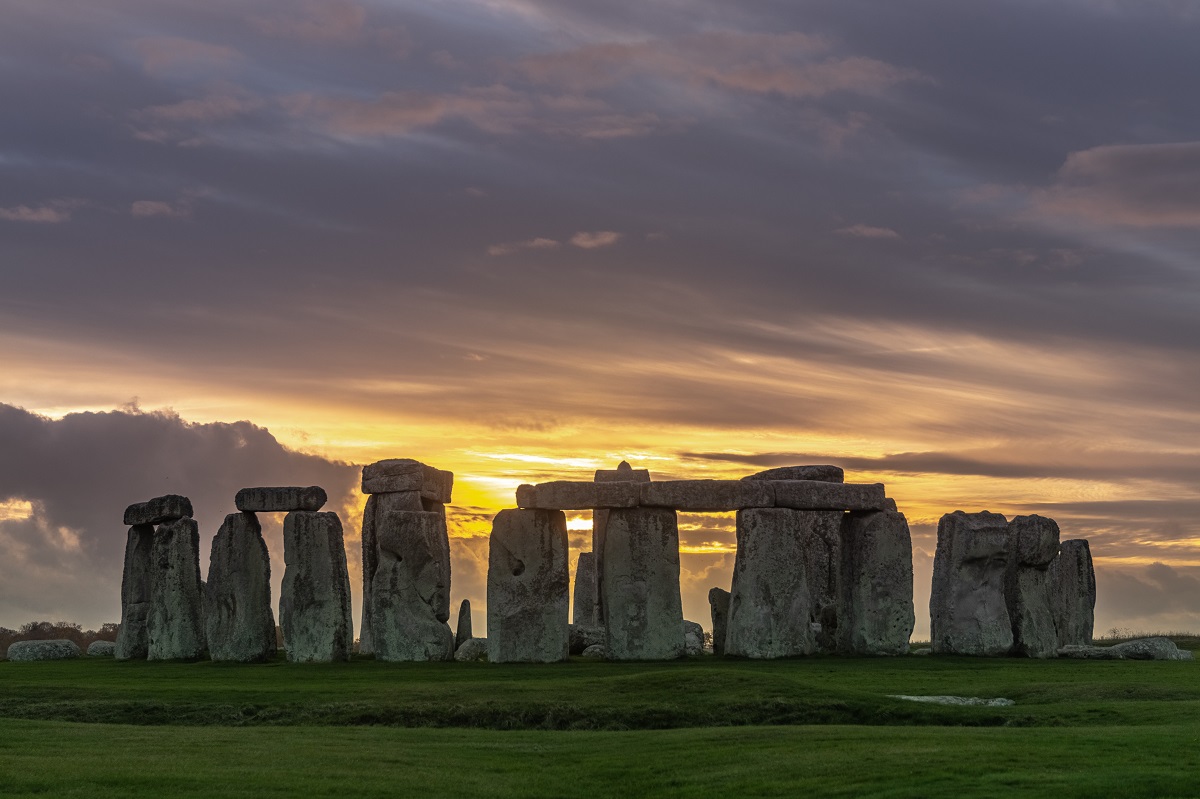
The prehistoric monument Stonehenge with its stone circles has amazed the modern world for many years. The question is why and how these huge megaliths have been lined up here on the Salisbury Plains.
39 Stall Street/1 Southgate
bhs.co.uk
7-14 Milson Street
houseoffraser.com
16-18 Stall Street
marksandspencer.com
Southgate
southgatebath.co.uk
Union Street/High Street
Northgate Street
podiumbath.com
Stall Street, Union Street, Broad Street, New Bond Street, Milsom Street, Southgate
At-Bristol
Anchor Road, Bristol
at-bristol.org.uk
Bristol Zoo
Guthrie Road, Bristol
bristolzoo.org.uk
Longleat Safari Park
Warminster, Wilshire
longleat.co.uk
Seaquarium
Marine Promenade, Weston-super-Mare
seaquarium.co.uk
The city of Bath has its roots even before Roman times, when Celtic people came to the hot spring on the site to honor the goddess Sulis. The Romans came to England in the year 43, and they quickly gained control of the southern part of the country and thus also Bath, which they called Aquae Sulis. The construction of the Roman baths took place in the year 60-70, and it is a very visible memory of this time to this day. At that time, the Romans had also erected temples to the Sulis of the Celts and to the Minerva of the Romans, and a community had emerged on the site.
After the final withdrawal of the Romans from the British Isles in 407, Bath’s history is not known in detail, but it is believed that people continued to live in the Roman facilities; however, the large complexes fell apart like the baths.
Saxons came into being, and in the 800s so-called Burghs were established, which were fortified cities that were to protect against not least possible attacks by Danish Vikings. Bath was one of those cities and it strengthened it as a regional center. Despite a relatively small size, the first king of England, Edgar, was crowned in the city in 973.
In 1088 there was a revolt in Bath, and the city was partially burned, but was soon rebuilt. In the following century, the bishop moved here, and the building of Bath Abbey was started. It became one of the dominant institutions of the Middle Ages in the city. And in 1189, Bath received the first mercantile rights. In the Middle Ages, the primary industry in the area was wool and not least the textile production that came with the wool.
In 1539, King Henry VIII closed the city monastery and most buildings were demolished. Bath Abbey remained standing, but in the following decades it lapsed due to the void that arose after the convent closure. The 16th century was also where wool and textile production began to decline. Instead, an incipient tourism sprouted for the city’s hot spring, which is said to have healing effects.
From 1590 Queen Elizabeth I’s new town rights came to Bath again in the city. A mayoral position was introduced, a new one was built, and then progress was made such as cleaning up the streets. However, the improved hygiene conditions could not keep the plague epidemics away from cities, the disease hit Bath in the years 1604, 1625, 1636 and 1643.
The 18th century was where Bath became a fashionable place and people and funds poured into the city, experiencing the beginning of a thriving period of growth with large increases in population and the construction of many of the prestigious buildings seen in Bath Today.
These include The Circus, Royal Crescent, Pump Room, Pulteney Bridge and Assembly Rooms. Institutions were also founded, a hospital in 1742 and the first bank in 1768 are just a few examples. Already in 1718 a program for cleaning and paving of streets as well as street lighting began. It was a booming time for Bath, and through the summer was packed with wealthy tourists.
At the beginning of the 19th century, more than 30,000 people lived in Bath, which was a considerable amount according to the conditions of the time. Bath was a significant city, but although the number of citizens doubled over the century, it was the new industrial cities in Central England that were now attracting both people and investment. Bath was back in the role of a provincial town, but now a very beautiful and fashionable one of a kind. The railway opened from Bristol in 1840, and the following year it was also possible to drive to London, which facilitated the continued development of tourism. In 1880, the ancient Roman baths were rediscovered, creating new interest in the city.
Throughout the 1900s, tourism was continuously developed, and it is also the city’s primary source of income today. During World War II, the city was bombed, but rebuilding soon after the war ended.
Many different museums were opened in the latter half of the 20th century, and it provided a strengthened tourism industry, with more and more for tourists to see, in addition to the Roman baths and the unique and harmonious city plan and buildings of the unique city.
Overview of Bath
The city of Bath is not one of England’s largest cities, but certainly one of the best known for visitors. The whole city center is like going back to the Georgian time in the 18th century, where architects and builders transformed the city from a relatively ordinary provincial town into a famous resort.
The city is home to the only natural hot spring on the British Isles, and they were already appreciated and used in Roman times. Over time, much of the city’s life has been centrered around the spring, and it still is. Today, it is both possible to see the preserved parts of the Roman baths and to take a dip in the warm water in modern spa facilities.
About the upcoming Bath travel guide
About the travel guide
The Bath travel guide gives you an overview of the sights and activities of the English city. Read about top sights and other sights, and get a tour guide with tour suggestions and detailed descriptions of all the city’s most important churches, monuments, mansions, museums, etc.
Bath is waiting for you, and at vamados.com you can also find cheap flights and great deals on hotels for your trip. You just select your travel dates and then you get flight and accommodation suggestions in and around the city.
Read more about Bath and England
Buy the travel guide
Click the “Add to Cart” button to purchase the travel guide. After that you will come to the payment, where you enter the purchase and payment information. Upon payment of the travel guide, you will immediately receive a receipt with a link to download your purchase. You can download the travel guide immediately or use the download link in the email later.
Use the travel guide
When you buy the travel guide to Bath you get the book online so you can have it on your phone, tablet or computer – and of course you can choose to print it. Use the maps and tour suggestions and you will have a good and content-rich journey.
Roman Ruins • Pulteney Bridge • Museums • Architecture • Bath Abbey
Overview of Bath
The city of Bath is not one of England’s largest cities, but certainly one of the best known for visitors. The whole city center is like going back to the Georgian time in the 18th century, where architects and builders transformed the city from a relatively ordinary provincial town into a famous resort.
The city is home to the only natural hot spring on the British Isles, and they were already appreciated and used in Roman times. Over time, much of the city’s life has been centrered around the spring, and it still is. Today, it is both possible to see the preserved parts of the Roman baths and to take a dip in the warm water in modern spa facilities.
About the upcoming Bath travel guide
About the travel guide
The Bath travel guide gives you an overview of the sights and activities of the English city. Read about top sights and other sights, and get a tour guide with tour suggestions and detailed descriptions of all the city’s most important churches, monuments, mansions, museums, etc.
Bath is waiting for you, and at vamados.com you can also find cheap flights and great deals on hotels for your trip. You just select your travel dates and then you get flight and accommodation suggestions in and around the city.
Read more about Bath and England
Buy the travel guide
Click the “Add to Cart” button to purchase the travel guide. After that you will come to the payment, where you enter the purchase and payment information. Upon payment of the travel guide, you will immediately receive a receipt with a link to download your purchase. You can download the travel guide immediately or use the download link in the email later.
Use the travel guide
When you buy the travel guide to Bath you get the book online so you can have it on your phone, tablet or computer – and of course you can choose to print it. Use the maps and tour suggestions and you will have a good and content-rich journey.

Baths Theater Royal was founded in 1805 and has since been one of the leading English theaters in the country outside London. The current entrance building to the theater was built in 1720.
Queen Square is one of the squares in Bath where one can see Georgian houses and town planning by the architect John Wood the Elder who lived in a house here himself.

Parade Gardens, also called Bath City Park, is a lovely green oasis along the River Avon in the center of Bath. From here you can enjoy excellent views of Pulteney Bridge and Bath Abbey, among others.
Victoria Art Gallery is an art museum where you can see works by British oil painters from the 17th century to the present day. Here are works by Gainsborough, Sickert and many others.

The Guildhall is one of Bath’s beautiful, monumental buildings in the city center. It is a representation hall that is today used for celebrating various parties and events.
At this museum you can experience the exciting history behind the transformation of the city of Bath from having been an ordinary provincial city to being an architectural gem and a world-famous spa.

This is one of the city’s more special but very worth visiting attractions, where you can taste the restaurant’s famous buns in several ways. It is a restaurant based on the French woman Sally Lunn who came to England more than 300 years ago.
At the end of the beautifully developed Great Pulteney Street you can visit the Holburne Museum of Art. It is located in the 18th-century Sydney Hotel.

Royal Crescent is a building consisting of 30 identical houses built in a circular section, as seen in several places in England. The houses were constructed in the years 1767-1774, and they are considered one of the most distinguished Georgian buildings in the country.
The Circus Square is like a circle with stately Georgian buildings around it. You can see the three rows of houses that were built in the period 1754-1768, and they form a gem in Bath’s urban planning.
Similar to Bath Travel Guide